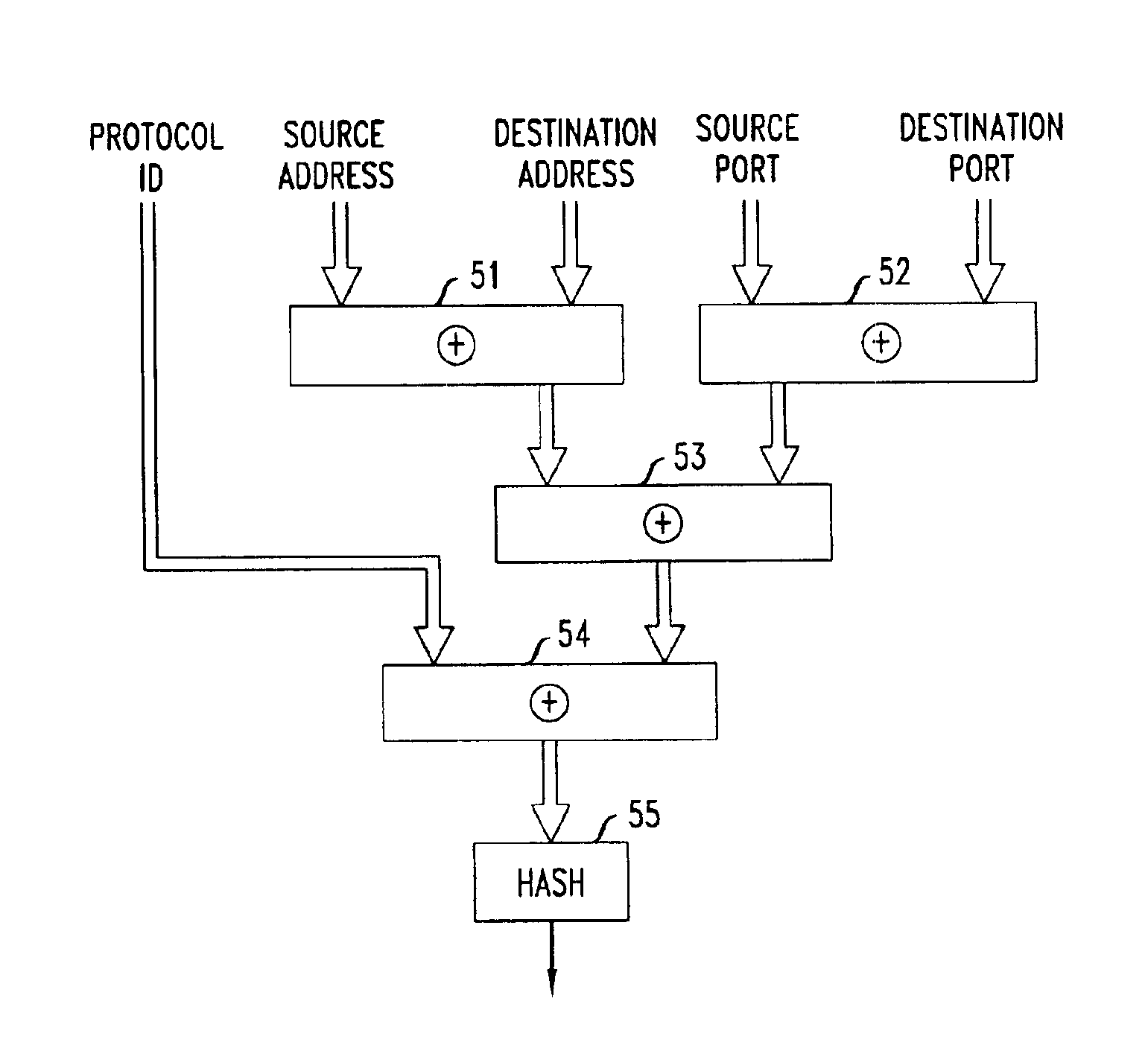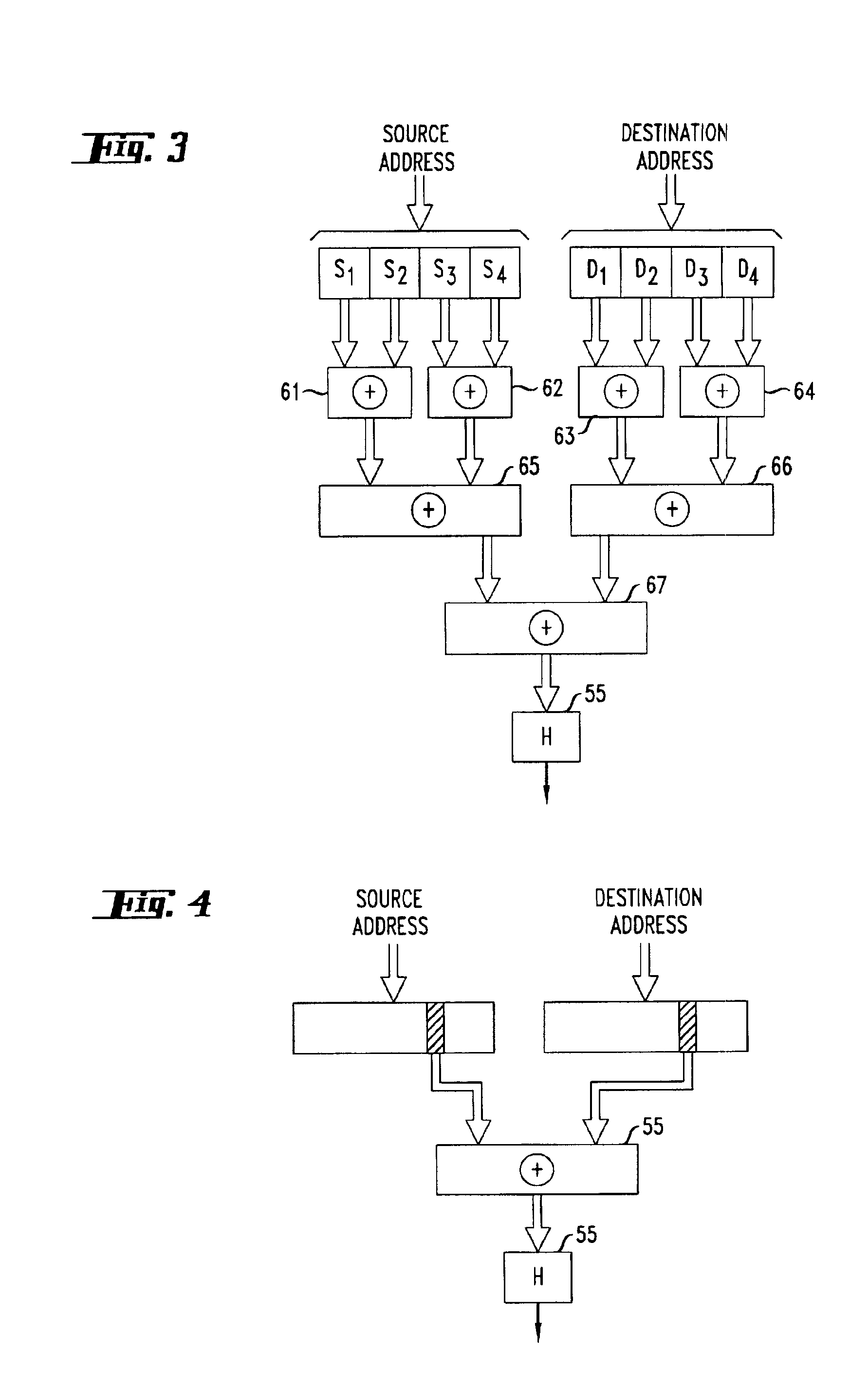Hashing-based network load balancing
a network load and hashing technology, applied in the field of network load balancing, can solve the problems of unnecessarily reducing throughput, complex implementation of load balancing in routers, and packet misordering at the receiving end
- Summary
- Abstract
- Description
- Claims
- Application Information
AI Technical Summary
Benefits of technology
Problems solved by technology
Method used
Image
Examples
Embodiment Construction
[0021]FIG. 1 presents a diagram of an illustrative arrangement that embodies the principals described herein. System 2 is a router with incoming links 4-8 and outgoing links 12-16. Each input link can be handled separately with respect to where packets that arrive on the input link are routed, or the packets of input links 4-8 can be effectively multiplexed and handled as a single stream of packets that are to be routed to output links 12-16. For purposes of this disclosure, while it matters not how system 2 is actually embodied, the principles disclosed herein are simpler to understand when the input is handled as a single stream and, therefore, the following assumes that input links 4-8 are applied to a multiplexer 30, yielding a single stream of incoming packets on line 31. Line 31 is coupled to hash circuit 35, and to routing element 20. Element 20 includes a controller 22 that is responsive to control signals arriving on line 10 and, of course, to the destination information co...
PUM
 Login to View More
Login to View More Abstract
Description
Claims
Application Information
 Login to View More
Login to View More - R&D
- Intellectual Property
- Life Sciences
- Materials
- Tech Scout
- Unparalleled Data Quality
- Higher Quality Content
- 60% Fewer Hallucinations
Browse by: Latest US Patents, China's latest patents, Technical Efficacy Thesaurus, Application Domain, Technology Topic, Popular Technical Reports.
© 2025 PatSnap. All rights reserved.Legal|Privacy policy|Modern Slavery Act Transparency Statement|Sitemap|About US| Contact US: help@patsnap.com



